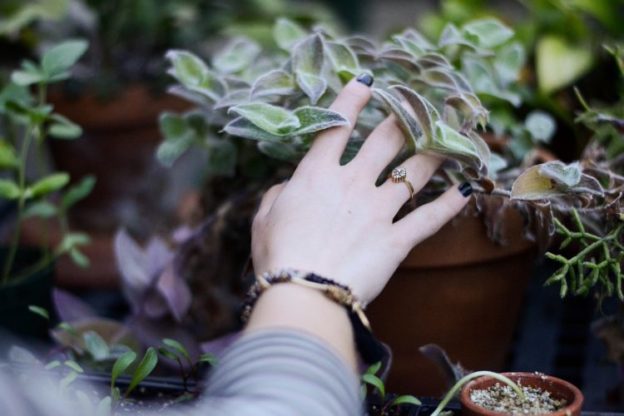Houseplants do a lot for humans. They beautify your indoor living space, and they improve the quality of the air you breathe. Some varieties feature blooms that make you smile, while others release compounds that help you heal.
Given all your houseplants bring to you, shouldn’t you do more to keep them happy, too? Of course, you should. Follow these tips to show a little love to the greenery that enhances your life.
Elements of Indoor Plant Care
Caring for houseplants is an exercise in empathy. Your philodendron can’t tell you in words when he needs more water. You have to put yourself in your plants’ shoes and predict their needs. Fortunately, all houseplants share four basic needs.
Water
All plants need a certain amount of water, but some varieties require more than others. Avoid falling into the overwatering trap. Some specimens, like begonias and wax plants, require watering only once per month or less. Read the instructions on the tag that comes with your blooms. When you place your plants around your home, group those with similar aquatic needs together.
Water doesn’t only apply to the moisture in the soil. It also refers to the humidity level in your home. Most houseplants feel happiest when the air sits somewhere between 30-50% humidity, so invest in a humidifier if yours is too dry.
Light
Plants vary when it comes to light requirements significantly. Some varieties, like spider and snake plants, do best in dim lighting. You can remember their lighting needs by their names — they sound like they’d feel right at home with things that go bump in the night. Other specimens, such as succulents, need direct sunlight all day long to thrive.
Soil
Different types of plants do best in various soil types. Succulents and cacti do well in sandy soil. Many tropical varieties prefer damp loam. When selecting a potting soil, pay attention to the pH level of your dirt for the best results. Some plants thrive in acidic soils, while others wilt.
Container
A houseplant can only grow as large as its container allows. For most people, this feature is a good thing — unless you’re creating an urban jungle. You can control the size of your growth. However, most plants flourish when they have wiggle room.
If you transplant houseplants to new containers, keep the soil from the original pot to use as well. Select a similar variety to what you previously used. Replanting traumatizes your greenery somewhat. Keep your beauties in a bright but indirectly lit room for a few days afterward while they recover.
Troubleshooting Houseplant Troubles
You’ve followed the instructions, but your Ficus is shedding leaves like a Siberian Husky loses fur in June. What can you do if you have a black thumb? Ask yourself the following questions.
- What kind of plants do you have? If you no longer have the tags that came with your plants, go online and look up the varieties you own. Are you watering too much? Not enough? What common pests and diseases affect these species?
- Are only your plants unhealthy? If your houseplants look sad and wilted, and your skin feels tight and itchy, your home humidity levels might be too low. Try investing in a humidifier or a diffuser to keep near your greenery. Your complexion will thank you for the increased moisture, also.
- Do you care too much? Yes, you want to keep your plants happy. Transplanting them too frequently can stress their roots. Adding too much fertilizer can burn them. Take a cue from human relationships — sometimes, love means letting go a little.
- Could hidden factors contribute? If you maintain everything perfectly, but your plants still seem unhappy, hidden factors could play a role. Take your soil to a nursery for testing and adjust it if necessary. Take a magnifying glass and look for tiny insects on stems and leaves. Check for drafts near windows where plants sit — if you feel cold, they do, too.
Keep Your Houseplants Happy and Healthy
Your houseplants help safeguard your physical health by cleaning the air you breathe. They give you a mental boost with their beauty. Show them some love by giving them the care they need to thrive at their best.








